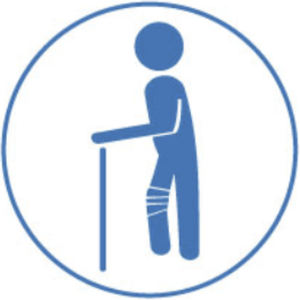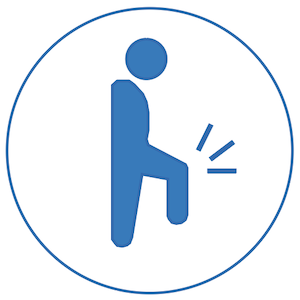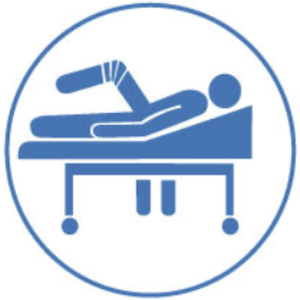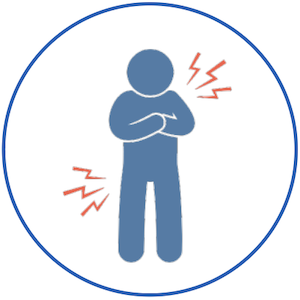MLS Laser Therapy Treatment for Nerve Pain
Neuropathic pain occurs when a health disorder affects your nerves that carry or transmit sensations to the brain. It is also called neuralgia or nerve pain. Although different health conditions can cause neuropathic pain, its most common cause is diabetes.
It is a complication characterized by lack of oxygen and nutrient supply to the distal parts of the body. The nervous tissues in the body develop neuropathic pain due to insufficient supply of blood and nutrients.
Unfortunately, health professionals have yet to find useful methods to reverse neuropathic effects. The reason is that nervous tissues can’t repair themselves, unlike other tissues in the body.
MLS laser therapy treatment works by tapping into the power of light. Your eyes can’t see the light energies of the body. Each cell in your body emits and absorbs light particles, called photons.
MLS laser therapy works by emitting a specific light wavelength in the targeted body tissues (nerve cells). As a result, it strengthens the cell to reduce inflammation, promote healing, and repair itself.
Schedule Your
Appointment Today
What are the Causes of Neuropathic Pain?
There are many causes of neuropathic pain, such as nerve pressure and damage after trauma or surgery. Other causes of nerve pain include vascular malformations, viral infections, cancer, multiple sclerosis, diabetes, and alcoholism.
Studies show that neuropathic pain can also occur as a side effect of various chemotherapy drugs. Environmental toxins, the shingles virus, injuries, and infections can also lead to nerve pain. There are several ways to approach neuropathic pain treatment.
Nerve pain or neuralgia feels like a burning, shooting, and stabbing sensation. Sometimes, the pain is as sudden and sharp as an electric shock. Patients who have neuralgia are very sensitive to cold, heat, and touch.
Health conditions that can cause neuropathic pain include HIV/AIDS, diabetes, stroke, cancer, multiple sclerosis, and carpal tunnel syndrome. Some studies show that cancer treatments such as chemotherapy, surgery, and radiation can also result in severe nerve pain.
Some research studies show that herbs and vitamins can support nerve health, regeneration, and regrowth. Prescription drugs and topical creams can help with the discomfort and pain caused by neuropathy. It is crucial to address the underlying cause of pain; for instance, the discomfort is usually caused by diabetes.
If the nerve cells have already been damaged, the treatment will often take a lot of time because it involves nerve regrowth. Many health professionals are successfully using low-level laser therapy for treating chemotherapy-induced peripheral neuropathy (CIPN).
How Does MLS Laser Therapy Work for Nerve Pain?
MLS therapy is a relatively new treatment for nerve pain and other chronic conditions. The procedure is known as laser therapy because it involves low-intensity light that does not heat the body. When the laser is applied to the affected area, it absorbs the light, causing the blood to rush to the painful area to promote healing of damaged nerves.
The damaged nerve fibers receive sufficient oxygen and nutrients, helping repair and optimizing normal functions. The result is reduced neuropathic pain and discomfort. It is a painful process and works to relieve symptoms associated with neuropathic pain.
MLS laser therapy reduces inflammation and promotes healing of damaged nerves. Depending on the intensity of complication, the patient may receive laser treatment multiples times in a week.
Research shows that the slow recovery of nerve functions in tissues can result in inflammation, numbness, and impaired limbs. MLS laser therapy involves the use of high-speed laser light, which processes the nerve cell reconnection that optimizes nerve healing.
Patients with acute nerve pain will need a minimum of 5-6 treatments every other day for two weeks. Some patient experience relief before even leaving the clinic, but in general, they will feel the maximum benefits within 5 to 7 hours after treatment.
Patients with chronic nerve pain will need a minimum of 10 to 15 treatments every other day for three to four weeks. It may take up to 5 treatments before the patient notices any difference. Hence, it requires a minimum of ten treatments to optimize healing.
Some studies show that neuropathic patients will need 10 treatments initially. Then, a single treatment is required every 1-2 months to reduce inflammation, numbness, and pain. MLS laser therapy can maintain maximum comfort level when used regularly according to the doctor’s instructions.

Benefits of Laser Therapy
- No known side effects.
- Painless and Non-Invasive.
- Drug-free.
- Rapid relief of pain.
- Strong anti-inflammatory effect.
- Timely healing of sprains & strains.
- Rapid recovery of the structural integrity of injured regions.
- Rapid resolution of swollen areas.
Laser Therapy Pain Relief
Research Into MLS Laser Therapy for Nerve Pain
Although MLS laser therapy is a fairly new treatment, it can provide relief from neuropathic pain. A growing body of research evidence has proven that laser treatment is effective when used appropriately.
A 2017 research study shows that low-level laser therapy improves sensory functions in patients with peripheral neuropathy. MLS laser therapy treatment has excellent and well-established protocols that can effectively treat nerve pain and related symptoms.
Another study measured pain management using the Michigan Neuropathy Screening Instrument. It is a standardized test used to quantify pain levels experienced by the patient. The study found that MLS low-level laser therapy could significantly reduce nerve pain in patients with Type 2 Diabetes.
Based on the research evidence, we can say that MLS laser therapy is a promising method for nerve pain relief. There is a need for more research studies to understand the effects of laser therapy. Anyway, MLS laser therapy is an accredited medical treatment. Many health providers, clinics, and medical centers are making it accessible to patients seeking relief from nerve pain.
Neuropathic pain is challenging for many people, as it is not easily manageable. However, you should not despair because MLS laser therapy is useful in treating nerve-related inflammation and pain. Studies have proven that it can treat both acute and chronic nerve pain.
Although MLS laser therapy treatment is a lesser-known option, it is readily available and accessible to patients. Laser therapy has soothing effects on your nerve cells. It can successfully treat nerve damage and pain. MLS is specifically programmed to treat a variety of health conditions, including joint pain, muscle pain, inflammatory bowel disease, bladder incontinence, and nerve pain.
Contact Us Today
Get in touch with the team at OrthoLazer in Newburgh, NY today to discuss your questions and health issues to discover if OrthoLazer’s M8 Robotic Laser Therapy is the correct treatment for your needs.
We can then book you in to see our specialist pain relief physician at our Newburgh practice that can personalize the program for your specific needs, begin the pain relief process which will have significant impact on improving your quality of life.
Contact OrthoLazer Newburgh
OrthoLazer Center
5020 Rte 9W
Newburgh, NY 12550
(845) 787-4084
Email Us
Hours
Monday: 8 am to 5 pm
Tuesday: 8 am to 5 pm
Wednesday: 8 am to 5 pm
Thursday: 8 am to 5 pm
Friday: 8 am to 5 pm
Saturday: Closed
Sunday: Closed






